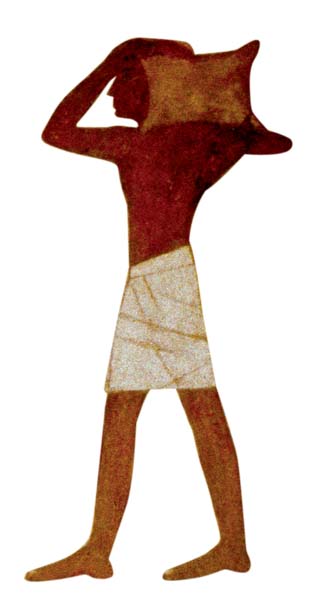
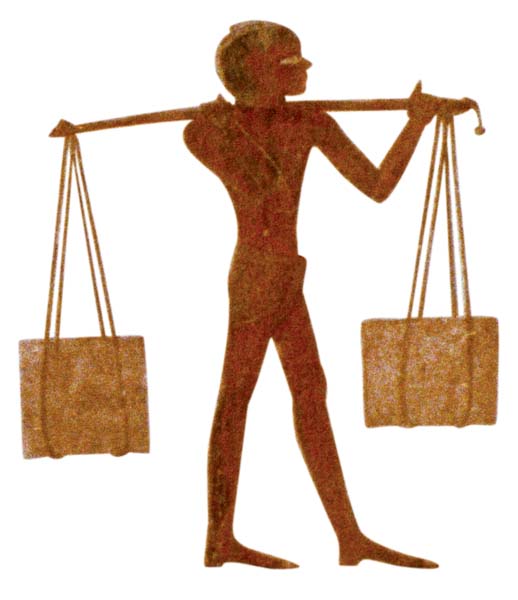
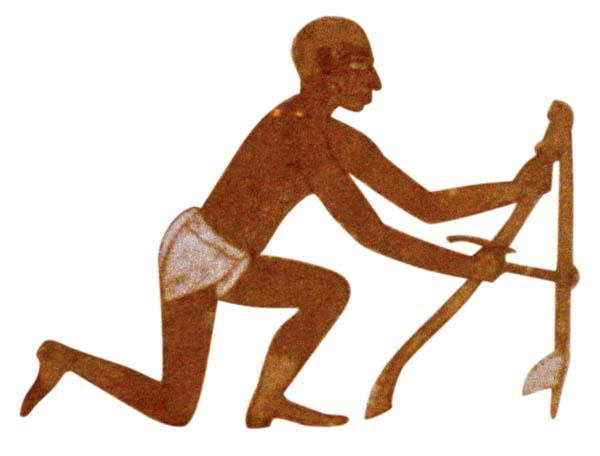
Every spring as Passover nears, TV audiences in America are accustomed to seeing Cecil B. DeMille’s The Ten Commandments starring Charlton Heston as Moses and Yul Brynner as Ramesses II, the putative pharaoh of the Exodus. For millions, the images from this classic film have shaped their understanding of the bondage of the Hebrews in Egypt and their triumphant departure under their liberator Moses who subsequently receives the Law from God at Mt. Sinai.
In the mid-20th century, the historicity of the Bible’s portrayal was, by and large, affirmed by leading North American scholars like William Foxwell Albright and, arguably his best-known student, George Ernest Wright. Not only did they accept the general accuracy of the Exodus narratives, but they believed that secondary archaeological evidence could be adduced to support the Biblical tradition. John Bright, another Albright student, maintained this view in his A History of Israel (1959). In the third edition of this classic work (1981), Bright opined that “There can really be little doubt that ancestors of Israel had been slaves in Egypt and had escaped in some marvelous way. Almost no one today would question it.”1
Just as this positive portrayal was being made, however, the origins-of-Israel debate was beginning, and battle lines between historical maximalists and minimalists were being drawn. The pages of BAR have regularly covered this debate over the past 20 years. At a gathering of Biblical-minimalist historians in Rome in 2005, they reaffirmed their antipathy toward the historical value of the Old Testament; the Exodus story was singled out for special mention.a “It never happened” was the theme.
Scholars who now question or reject the Biblical reports generally do so for several reasons: (1) the lack of corroborating archaeological evidence in Egypt and Sinai, (2) because they regard the Exodus narratives as myth, legends, folktales, and/or, (3) because the narratives were written so many centuries after the events and are so theologically and ideologically shaped that they cannot be read as history.
Concerning the first point, Scandinavian minimalist Niels Peter Lemche has commented that “The silence in the Egyptian sources as to the presence of Israel in the country” is “an obstacle to the notion of Israel’s 40 years sojourn.”2 On the second point, American scholar Bernard Batto speaks for a number of other scholars when he declares that “The biblical narrative in the books of Genesis through Joshua owes more to the folkloristic tradition of the ancient Near East than to the historical genre.”3
Despite over a century of archaeological excavations in Egypt, proof of the dramatic Exodus has not been found. Pioneer Egyptologists like William Matthew Flinders Petrie and H. Edouard Naville explored the Nile Delta and Wadi Tumilat to identify sites mentioned in the Exodus narratives. They may have successfully identified some of these places, but they, like archaeologists ever since, have not been able to produce direct evidence to demonstrate the presence of the Hebrews in Egypt.
There are several possible reasons for this absence of evidence. The first possibility is, as the Biblical minimalists suppose, that the Hebrews were never there.
A second, more likely explanation is that we have had unrealistic expectations as to what archaeology can deliver.4 After all, what evidence, short of an inscription in a Proto-Canaanite script stating “bricks made by Hebrew slaves” would be considered proof that the Israelites were in Egypt? Archaeology’s ability to determine the ethnicity of a people in the archaeological record, especially of the Israelites at such an early period, is quite limited. Assuming the Israelites were in Egypt during Egypt’s New Kingdom (c. 1540–1200 B.C.), what kind of pottery would they have used? What house plans would they have lived in? What sort of burial traditions did they practice? And would archaeologists be able to identify the burial of these early Israelites who ended up as slaves anyway? And how are all these things different from those of Canaanites or other Semitic-speaking peoples in Egypt at this time?
The Bible locates the Hebrews in Egypt’s northeastern Delta, called the Land of Ra‘amses (Genesis 47:11) and Goshen (Genesis 45:10, 47:4, 6; Exodus 8:22; 9:26). Although the Delta contains hundreds of archaeological sites, comparatively they have not received as much attention as sites on the Nile from Cairo south to Aswan. Thus in John Baines and Jaromir Malek’s The Atlas of Ancient Egypt,5 94 pages are needed to describe sites between Cairo and Aswan; just ten are devoted to Delta sites.
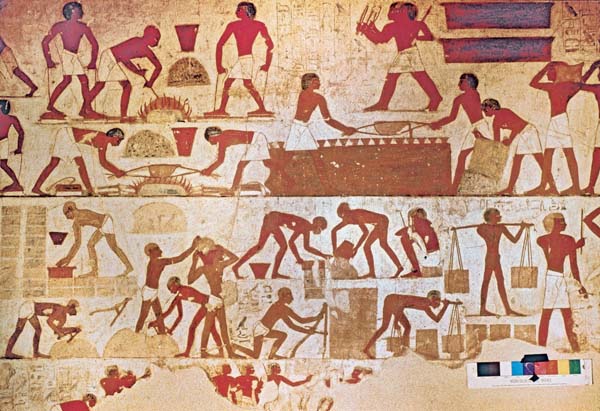
The picture has improved somewhat since 1980 but the fact remains that high water tables in the Delta make excavating to early levels difficult and expensive. Moreover, in the moist environment of the Delta, surviving papyri are rare.6 The excavation at Tell el-Dab‘a (ancient Avaris, the Hyksos capital), directed by Manfred Bietak of Vienna University, uses a pump and an elaborate network of pipes in order to remove water from the ground to allow diggers to reach New Kingdom levels. During a visit in 2002, I saw the scribes’ quarter of the early-18th-Dynasty palace (c. 1500–1450 B.C.) that was being exposed from the moist mud of the Delta. A number of inscribed clay seals and seal impressions were found, some of which date to the 12th Dynasty (c. 1900 B.C.), but no papyrus had survived.7 Indeed, after more than 35 years, Bietak’s team has not discovered any papyri.
At the nearby sister site of Qantir, after nearly 25 years of work, Edgar Pusch and his colleagues have likewise not discovered any papyri at what is now believed to be Pi-Ramesses, which was the capital of Egypt during the 13th–12th centuries,8 and might be the site known as Ra‘amses built by Israelite slaves (see Exodus 1:11).
In short, the Nile Delta where the Bible says the ancient Israelites lived has produced no historical or administrative documents that might shed light on any period.
Moreover, the types of royal inscriptions found on stelae and temples never include any negative reports about Pharaoh and his armies. Rather, they speak of his triumphs and deeds of valor, and even distort set-backs such as the near disaster to Ramesses II’s army at the battle of Kadesh, about which we know from other sources. Consequently, no one will ever find a stela commemorating the humiliation of Pharaoh as a result of the plagues or the defeat of the Egyptian forces dispatched to bring the fleeing Hebrews back to Egypt.
Because we cannot expect to find textual proof of the Israelites in Egypt, we must ask whether the Bible’s report is plausible in light of secondary evidence provided by archaeology. Do elements of the story have the ring of authenticity or are they fanciful? Did pastoralists from the Levant migrate to Egypt during times of famine? Is there evidence from Egypt of foreigners being pressed into hard labor for Pharaoh? Do the geographical places named in the Exodus story square with realities on the ground?
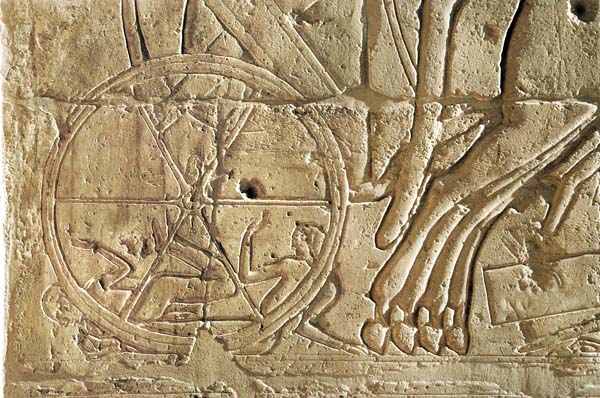
First, were there Semites in Egypt? The famous Assyriologist Jean Bottero summarizes what historians and archaeologists know to be the case, “On the borders of the Delta, from time immemorial, small groups of these bedawin [Bedouin] came to pasture their flocks, tempted by the proximity of better grazing-grounds and possible loot.” This testimony is supported in Egyptian literature. One sage, Neferti, who lived around 1900 B.C., laments the fact that Semitic-speaking people had infiltrated the Delta:
All happiness has gone away, the land is cast down in trouble because of those feeders, Asiatics (sttyw) who are throughout the land. Enemies have arisen in the East, Asiatics (‘amu) have come down to Egypt … One will build the “Walls of the Ruler” to prevent Asiatics (‘amu) from going down to Egypt. They beg for water in the customary manner in order to let their flocks drink.9

Seven hundred years later, Papyrus Anastasi 6 (from the reign of Pharaoh Merneptah [1213–1203 B.C.]), contains a report from a border fort in the Wadi Tumilat region that an Edomite Bedouin tribe was permitted to “pass the fortress Merneptah-hetep-hir-maat which is in Tjeku (Succoth)” to water their flocks at “the pools of Pi-Atum.”10
These texts span a period of 700 years during the second millennium B.C., illustrating that pastoralists from western Asia regularly come with their flocks into Egypt to water and pasture them.
Support for the historicity of these texts comes from burials with Canaanite artifacts found in the Delta and the Wadi Tumilat at more than half a dozen sites.11 Some of these remains belonged to these pastoralists, while others can be attributed to Semitic-speaking peoples from the Levant who settled in Egypt, some of whom became identified with the Hyksos who actually ruled Egypt from their capital at Avaris for at least a century (c. 1650–1540 B.C.).
Thus both texts from Egypt and archaeological evidence from the second millennium B.C. agree that Semites entered Egypt with flocks and herds, especially in times of drought in Canaan.
This is precisely the picture portrayed in Genesis regarding Jacob and his family. Drought and famine in Canaan prompted the patriarch to send his sons to Egypt where there was grain, which eventually led them to settle in Egypt with their flocks and herds (Genesis 43:1–15).
The Bible describes two kinds of labor imposed on the Israelites: (1) brick-making for building projects and (2) farm work: “The Egyptians became ruthless in imposing tasks on the Israelites, and made their lives bitter with hard service in mortar and brick and in every kind of field labor” (Exodus 1:13–14).
New Kingdom Egypt is well-known for its military campaigns north into Canaan and Syria, and south into Nubia. Thousands of POWs were brought back to Egypt, some of whom are depicted on the famous tomb painting of Rekhmire, Vizier of Thutmose III (1457–1425 B.C.). Egyptian taskmasters are shown with sticks, supervising foreign workers making mud bricks, as they haul the bricks in shoulder yokes to a nearby temple building-project. The accompanying text identifies these laborers as having been brought back from military campaigns in Canaan-Syria and Nubia.
The Bible reports that the Hebrew slaves could not reach the quotas set by Egyptian officials (Exodus 5:7–8). To make matters worse, the straw required for making bricks was withheld (Exodus 5:18). Egyptian texts from the third and second millennia B.C. report on how work targets and quotas were imposed on brick makers.12 Records of brick-making teams, targets and shortfalls, are found on a leather scroll now in the Louvre that dates to the fifth year of Ramesses II (1275 B.C.).13 Occasionally a quota was reached, leading one Ramesside period supervisor to boast in a letter that his workers “are making their quota of daily bricks.”14 Another officer from the same period complains that he was unable to get on with his brick-making because “there are no men to make bricks nor straw in the neighborhood.”15 These statements from Ramesside period texts have a familiar Biblical ring to them.

Another papyrus (Leiden 348) reports that “the ‘Apiru … are dragging stone to the great pylon of [///]” for the construction of a palace.16 While scholars continue to debate whether the term ‘Apiru/Habiru refers (and is philologically related) to the early Hebrews, it is clear from this text that right up to the time when many believe the Exodus occurred that foreigners, in this case ‘Apiru, were engaged in hard labor in Egypt.
Because the Exodus narratives report dramatically about the hardships surrounding the brick-making (e.g., Exodus 2:11, 23; 5:4–19), the mention of “every kind of field labor” in Exodus 1:14 is often overlooked by researchers. Studies of paintings and reliefs from tombs of the New Kingdom reveal, however, that foreigners, typically POWs, are depicted herding cattle and doing various types of field work.17 They are also portrayed working in vineyards and working winepresses. In the 18th-Dynasty tomb of Intef, one such scene reports that ‘Apiru were pressing grapes for wine.
The Bible reports that the Israelites worked as slaves for Pharaoh. Egyptian sources confirm that forced labor was imposed on foreigners, typically POWs, during the general period when the oppression of the Israelites occurred.
In sum, the entry of the ancient Hebrews into Egypt in search of water during famine and their subsequent enslavement seems authentic. It is certainly unlikely that such a demeaning and ignoble origin would have later been invented by the Biblical authors. If it were fiction, one would expect the product of the creative imagination to offer a more glorious picture of their own origins.
Egyptologists and Biblical scholars have long been interested in the toponyms or place names relating to the route of the Exodus. There is a good reason for such an investigation: A concocted story written centuries after the purported event would likely not bother with such trivial details as geography. No archaeologist to my knowledge has attempted to discover, for example, The Shire or Mordor from the Lord of the Rings trilogy, because they recognize that these great stories are novels, modern mythology that flowed from the creative imagination of J.R.R. Tolkien. They are not history.
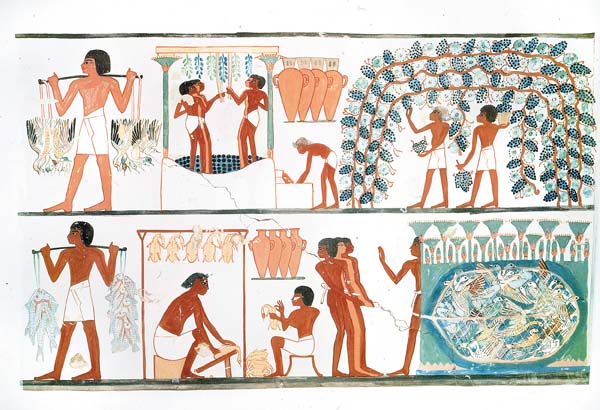

But the Exodus sites are different. And there are some recent discoveries, discussed here for the first time in popular print, that shed new light on the existence of some of these Egyptian sites.
Ra‘amses is a “store city” for which the Israelites made construction bricks (Exodus 1:11). It is also the starting point for the Exodus (Exodus 12:37; Numbers 33:3). This is likely to be equated with the Delta capital built by and named for Ramesses II, that is, Pi-Ramesses, “the house of Ramesses,”18 as we know from Egyptian records. Its precise location, however, has been difficult to pin down. Since the 19th century, archaeologists have suggested several sites. Since 1980, Edgar Pusch of the Pelizaeus Museum in Hildesheim Germany has been excavating at Qantir,19 and there is now widespread agreement that he has identified Pi-Ramesses,20 a massive city that a magnetometer survey reveals occupied about six square miles.21
Egyptian records tell us that during the reign of Ramesses IX (1099–1069 B.C.), Pi-Ramesses was abandoned apparently because the Pelusiac branch of the Nile through the Delta had migrated away from the city, limiting transportation and communication. By about 1075 B.C., before the passing of the last Ramesside pharaoh,22 a new Delta capital was built that remained so until Greco-Roman times. It is known in Egyptian texts as Djanet, which is Zoan in the Hebrew Bible (Numbers 13:22), and is better known by its Greek name, Tanis.
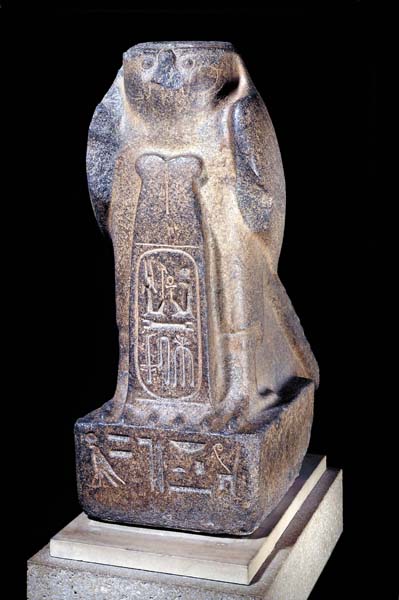
The fact that the city of Pi-Ramesses had a history limited to the period from c. 1275–1075 B.C. is extremely significant for the appearance of a Delta site named Ra‘amses in the Exodus narrative. Archaeologist Israel Finkelstein,23 Egyptologist Donald Redford24 and Bible scholar John Van Seters25 all argue that the toponyms in the Book of Exodus reflect realia of the seventh or sixth century B.C. rather than the time of the Exodus. What do they do with Pi-Ramesses, however, which didn’t exist in the seventh or sixth century B.C.? Some Biblical minimalists simply dismiss this significant correlation of the dates of Biblical Ra‘amses and Egyptian Pi-Ramesses. Other minimalists say that the old name of the cults of Pi-Ramesses lived on in Tanis, and this is the seventh-century B.C. Ra‘amses of the Bible.26 This creative explanation leads Niels Peter Lemche to believe that “Ramses may in Exodus 1:11 refer to Tanis.”27 This explanation is convenient for those bent on dating the narratives to the late period. The reason for rejecting this explanation, however, is clear: The author(s) of the Exodus narrative knew the difference between Pi-Ramesses and the first millennium B.C. city of Tanis. Tanis was the prominent city of northern Egypt in the first millennium B.C. When the first millennium B.C. psalmist reflected on the plagues that struck Egypt prior to the Exodus, they occurred in Tanis/Zoan (Psalm 78:12, 43), and not Ra‘amses. The simplest explanation is that the city of Ra‘amses in the Exodus story corresponds to Pi-Ramesses, a city that was unknown to seventh-century B.C. writers.

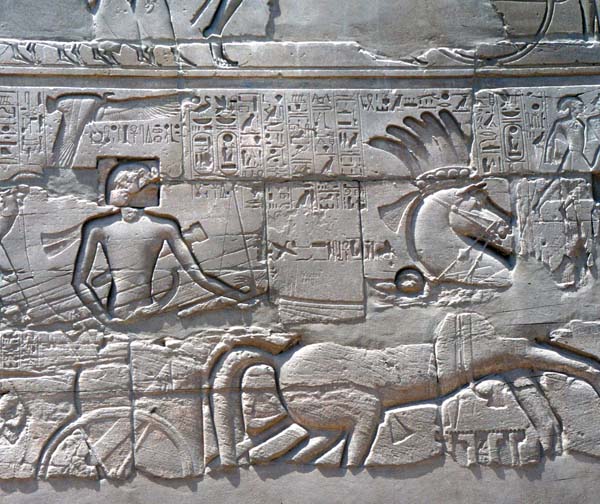
Pithom is mentioned only in Exodus 1:11. It is the second city for which the Hebrews made mudbricks. The name derives from the Egyptian p(r)-itm, “House of Atum.” Atum, the sun-god of Heliopolis, was also the patron deity of the Wadi Tumilat, whose present-day Arabic name preserves the deity’s name in Tumilat. Hence it has been thought to be the region where Pithom is located. Two sites in the wadi have been proposed for Pithom—Tell el-Maskhuta and Tell el-Retabeh. John S. Holladay of the University of Toronto dug at Maskhuta in the 1970s.28 and determined that the site was unoccupied between the 17th century B.C. and the end of the seventh century B.C. Therefore, it could not be Biblical Pithom.
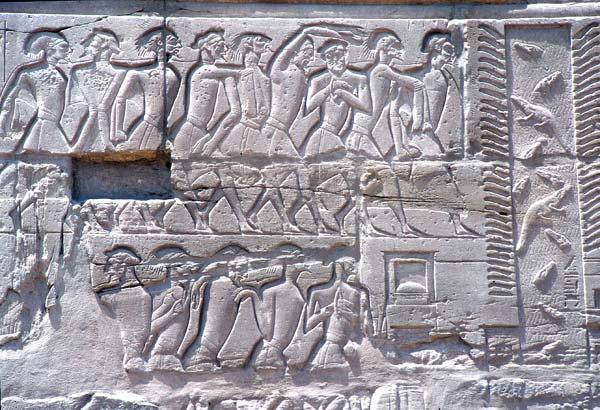
Archaeological work at Tell el-Retabeh during the 1970s revealed that it was occupied throughout the New Kingdom.29 It was then suddenly abandoned during seventh century at precisely the time that Maskhuta was being built. In the process, blocks from Ramesside Retabeh were likely moved and reused at Maskhuta. That explains why, even though Maskhuta was unoccupied in the Ramesside period, Ramesside objects were found at the site.30 Perhaps the name Pithom was transferred from one site to the other. In any event, I believe that Retabeh is Biblical Pithom, although the name Pithom might also have applied to neighboring Maskhuta beginning in the seventh century B.C. From the second millennium B.C. and through the first millennium B.C., however, Pithom was located at Retabeh. Therefore Pithom would have been known to a Biblical writer in the late-second millennium B.C. just as well as the late period.
Succoth is the Israelites’ first stop after departing from Ra‘amses (Exodus 12:37; Numbers 33:5). After heading directly southeast from Ra‘amses to Succoth, the Israelites were instructed to make a sharp turn back north. The Lord told Moses, “Turn back (Hebrew ûb–) and camp in front of Pi-hahiroth, between Migdol and the sea, in front of Baal-zaphon; you shall camp opposite it, by the sea” (Exodus 14:2). This would take the Israelites toward the well-defended coastal highway leading to Canaan. It is best known from a relief of Seti I (1294–1279 B.C.) (the father of Ramesses II) in the Karnak Temple. That relief illustrates a series of forts on the route, recording each of their names. This was the route that the Israelites tried to avoid after leaving Ra‘amses; Exodus 13:17 states that the Israelites did not go by the “way of the land of the Philistines” (i.e., the coastal route) for fear of encountering Egyptian hostilities and then having to return to Egypt. No one who has studied the Exodus itinerary has thus far offered any compelling reason why the Israelites would turn back north into the teeth of Egypt’s east-frontier defense network. The route they had been traveling was equally dangerous; the Anastasi Papyri reveal that the eastern end of the Wadi Tumilat was also heavily defended by forts. Additionally there were lakes and marshlands throughout the Isthmus of Suez between the Mediterranean and the Gulf of Suez. So there was no easy way out of Egypt.
Recent archaeological evidence, however, suggests how the Israelites may have found a way through these dangers on either side. The sequence of forts in the Seti relief at Karnak dramatically illustrates the Egyptian defenses on the eastern frontier.
The first fort on the route is Tjaru/Sile. The next one is “The Dwelling of the Lion.” This is followed by the “the Migdol of Men-maat-re” (i.e., “the Fortress of Seti I”). Ten additional forts guarded the route on the way to Canaan.
The excavations of Mohamad Abd el-Maksoud of the Supreme Council for Antiquities of Egypt has finally settled the location of the first site, Tjaru/Sile—Tell Hebua located 3 miles east of the Suez Canal near Qantara East in Sinai. In 1999 Abd el-Maksoud’s team discovered a Ramesside-period votive statue identifying the site as the long-sought Tjaru.31
The most impressive structure at Tell Hebua is a massive fortress 865 yards long and 430 yards wide. It is not hard to see why the Israelites did not take the “way of the Land of the Philistines.” It would have been a deadly trap!
Just 3 miles southeast of Tell Hebua is the site of Tell el-Borg. Since 2000 it has been excavated by the North Sinai Archaeological Project, which I direct. There we found the remains of what we believe to be a Ramesside-period fort with walls 12 feet thick. It seems to have been square-shaped about 275 feet on a side. We recovered a small stone inscription stating that during the reign of Ramesses II the fort was occupied by a unit of soldiers from the Division of Amun. This unit would have constituted up to 250 soldiers. We believe that el-Borg is the second site on the Seti relief, namely “The Dwelling of the Lion.”
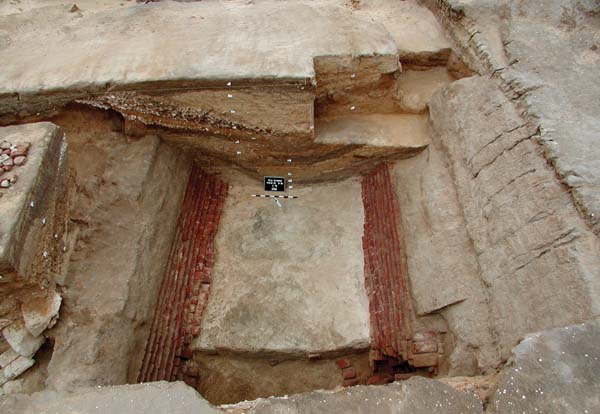
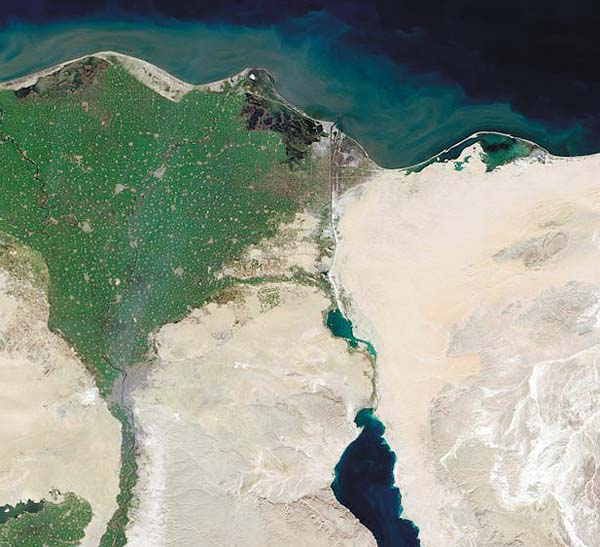
If that is the case, the third fort, Migdol of Men-maat-re, was probably located 3 to 5 miles away. This third fort might hold the key to locating the Hebrew escape route. In Exodus 14:2 we are told that the Israelites camped “between Migdol and the sea.” In the latter part of the 1980s, coastal geologist Daniel Stanley of the Smithsonian Institution conducted subsurface drilling of the east delta and north Sinai. His results show that the Mediterranean coastline at the time the Exodus was approximately 20 miles south of its present location.32 This in turn leads to the conclusion that Tjaru/Sile was situated on an ancient barrier island. It was probably the major port of entry to Egypt from the Levant during the second millennium B.C. Immediately south of this narrow barrier island, a Nile channel passed, surrounded by marshy areas that emptied into a large lagoon to the east that in turn emptied into the Mediterranean Sea.
From the Bible, we know that Migdol was near the sea through which the Israelites would later pass. It was the Yam Suf, the Sea of Reeds (not the Red Sea of the Septuagint, the Greek translation that has unfortunately been followed by most English translations over the centuries). The word sûp– reflects the Hebrew writing of the Egyptian word t–wf(y) meaning reeds,33 and it corresponds to the marshy wetlands and lakes on Egypt’s eastern frontier.34 The Onomastatica of Amenemopet, a type of ancient geographical list from the Ramesside period, contains a sequence of major Egyptian toponyms (place-names), running from the southern frontier to its northern limit. Tjaru/Sile is named as the northernmost point in Egypt.35 The name on this list before that is p3 t–wf(y), the marshes or reedy wetlands. This sequence demonstrates that this reedy, marshy lake district was south of Tjaru/Sile on Egypt’s eastern border with Sinai.
Immediately south of Tell el-Borg and our tentatively proposed location of Midgol farther to the east is a system of lakes that was known until the last century as the el-Ballah lakes, the most viable candidate for Yam Suf. Thirty years ago, Manfred Bietak proposed that this lake basin was Egyptian p3 twfy which the Biblical writers of the Exodus story called Yam Suf in Hebrew.36 I believe Bietak was right.
Tjaru/Sile, lying on a barrier island, was situated with the Mediterranean on the north and a large lagoon on the south. Migdol probably lay on the southern shore of the lagoon. The Israelites probably avoided Tjaru/Sile by passing to its south and in the direction of Migdol and then proceeding through the marshy el-Ballah lakes.
The recent discovery of New Kingdom-period forts in northern Sinai, and the likelihood that Migdol of Exodus 14:2 is close to Tell el-Borg means that we are indeed close to the location of a key site for pinpointing the location of the Exodus from Egypt as described in the Bible.
I have shown that the Biblical description of the entry into Egypt, the enslavement and the Exodus are all plausible. I have also shown that several of the geographical sites on the Exodus route are attested in Egyptian records of the New Kingdom.
But what about the Biblical text itself? I may be charged with circularity because I look in part to the Biblical text to determine the historicity of the Biblical text. But I do believe the text is entitled to some weight, especially because the Exodus is such a central event—and remembered as such—in the long history of ancient Israel, and the Bible offers no other story about Israel’s origins. It is so in the Torah (the Pentateuch or Five Books of Moses), as well as in the historical books and in the Prophets.
As the Ten Commandments puts it: “I am the Lord your God, who brought you out of the land of Egypt, out of the house of bondage” (Exodus 20:2). The rationale for Israel’s obligation to her God Yahweh, then, is because he liberated the Hebrews from slavery and brought them out of Egypt.
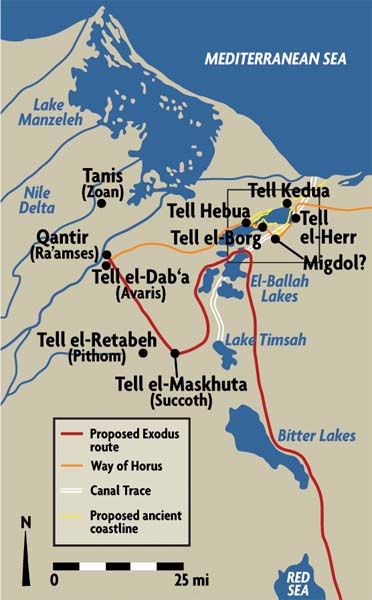
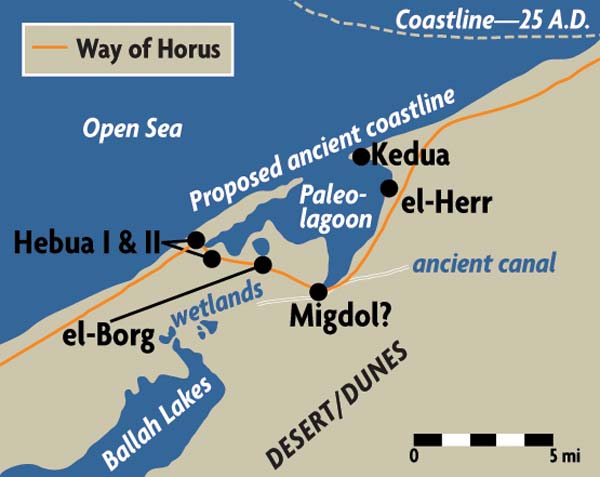
The memories of Egypt do not fade with the arrival of the Israelites in Canaan. The helpful Canaanite prostitute Rahab of Jericho declares:
I know that the Lord has given you the land, and that dread of you has fallen on us, and that all the inhabitants of the land melt in fear before you. For we have heard how the Lord dried up the water of the Reed Sea before you when you came out of Egypt (Joshua 2:9–10).
Events in Egypt also left an indelible impression on Israel’s prophets:
When Israel was a child, I loved him, and out of Egypt I called my son.
(Hosea 11:1)
Hear this word that the Lord has spoken against you, O people of Israel, against the whole family that I brought up out of the land of Egypt.
(Amos 3:1)
It is abundantly clear that ancient Israelites believed the Exodus to be an actual event that served as the basis for their religion and self-understanding. The Biblical evidence concerning the sojourn and Exodus are so deeply rooted in the Hebrew Bible that it cannot be cavalierly dismissed.
In short, the Bible paints a plausible scenario and archaeology provides the context.
Uncredited photos courtesy of the author.
MLA Citation
Footnotes
“Minimalists on Parade,” BAR 31:01.
Endnotes
Neils Peter Lemche, Ancient Israel; A New History of Israelite Society (Sheffield: JSOT Press, 1988), p. 31.
Bernard Batto, Slaying the Dragon: Mythmaking in the Biblical Tradition (Louisville: Westminster/John Knox, 1992), p. 102.
For a recent discussion of this type of problem, see David Merling, “The Relationship Between Archaeology and the Bible: Expectations and Reality,” in James K. Hoffmeier and Alan Millard, eds., The Future of Biblical Archaeology: Reassessing Methodologies and Assumptions (Grand Rapids: Eerdmans, 2004), pp. 29–42.
One example is the corpus found by Petrie at Tanis in the late 19th century. See F.L. Griffith & W.M.F Petrie, Two Hieroglyphic Papyri from Tanis (London: Egypt Exploration Fund, 1889). These texts are from the Roman era.
Only in September 2003 was the first fragment of a clay tablet discovered at Qantir, and this was a portion of a letter from the Hittite king, Hatusilis III, to Ramesses II. Formal publication of the text is in progress.
Miriam Lictheim, Ancient Egyptian Literature (Berkeley: University of California Press, 1975), p. 141.
Translation my own, text is found in Alan H. Gardiner, Late-Egyptian Miscellanies (Brussels: Queen Elizabeth Egyptological Foundation, 1937), p. 77.
Tell el-Maskhuta, Tell el-Retabeh, Tell el-Yehudiah, Inshas, Tell Farasha, Tell el-Kebir and of course Tell el-Dab’a, the Hyksos capital. J.K. Hoffmeier, Israel in Egypt (London: Oxford Univ. Press, 1999) pp. 62–68.
Hoffmeier, Israel in Egypt, p. 114. The break in the text makes identifying the building under construction, but the epithet “beloved of Ma’at” used in Papyrus Leiden 348 is found in Papyrus Anastasi IV 5, 6 applied to the king’s palace; cf. Caminos, Late-Egyptian Miscellanies, p. 153.
Unpublished study by Ellen Morris (“The Consequences of Conquest: A Foreign Population’s Entrance and Acculturation into Ancient Egyptian Society”). Dr. Morris, a professor at the University of Wales, Swansea, kindly gave me a version of this paper some years ago, and at the recent International Congress of Egyptology (September 2004) presented an updated version (cf. Abstracts of the Ixe Congrès des Egyptologues, 6–12 Sepembre 2004, p. 85).
Alan H. Gardiner, “The Residence of the Ramessides,” Journal of Egyptian Archaeology 5 (1918), pp. 127–138.
In the early 1940s, Labib Habachi led him to believe that Tell el Dab‘a-Qantir were home to Avaris and Pi-Ramesses respectively. Most of his discoveries were only recently published 20 years after his death and nearly 40 years after his excavations. cf. Labib Habachi, Tell el-Dab‘a I: Tell el-Dab‘a and Qantir the Site and Its Connection with Avaris and Piramesse (Vienna: Verlag der Österreichischen Akademie der Wissenschaften, 2001).
Edgar Pusch, “Piramesse,” in D. Redford, ed., Oxford Encyclopedia of Ancient Egypt 3 (New York: Oxford Univ., 2001), pp. 48–50. It should be noted that back in the 1940s and 1950s, the Egyptian archaeologist Labib Habachi had excavated in the Qantir/Tell el-Dab‘a region. His reports were only recently published nearly 20 years after his death, but in 1955 he proposed that Qantir was Pi-Ramesses and Ra`amses of the Bible. See Habachi, Tell el Dab’a I, pp. 23–127.
Kenneth Kitchen, The Third Intermediate Period in Egypt (1100–650 B.C.), 3rd ed. (Warminster: Aris and Phillips, 1986), pp. 243–254.
Israel Finkelstein and Neil Asher Silberman, The Bible Unearthed: Archaeology’s New Vision of Ancient Israel and the Origin of Its Sacred Texts (New York: The Free Press, 2001).
Donald Redford, Egypt, Canaan, and Israel in Ancient Times (Princeton: Princeton Univ., 1992), p. 409.
John Van Seters, “The Geography of the Exodus,” in J. Andrew Dearman and M. Patrick Graham, eds., The Land That I Will Show You: Essays on the History and Archaeology of the Ancient Near East in Honour of J. Maxwell Miller (Sheffield: JSOT Press, 2001), p. 256.
Edward Wente, “Rameses,” in D.N. Freedman, ed., Anchor Bible Dictionary 5 (New York: Doubleday, 1992), pp. 617–618.
Niels Peter Lemche, “Is It Still Possible to Write a History of Israel?,” Scandanavian Journal of Old Testament 8 (1994), pp. 172–174.
John S. Holladay, Tell El-Maskhuta: Preliminary Report on the Wadi Tumilat Project 1978–1979, Cities of the Delta, Part III, vol. 6, ARCE Reports (Malibu: Undena Publications, 1982).
H. Edouard Naville, The Store City of Pithom and the Route of the Exodus (London: EEF Memoir, 1888).
This statue is not yet published, but I studied it together with Dr. Abd el-Maksoud on the day it was discovered and agree with his reading. See James K. Hoffmeier and Mohamed Abd el Maksoud, “A New Military Site on the ‘Ways of Horus’—Tell El-Borg 1999–2001: A Preliminary Report,” Journal of Egyptian Archaeology 89 (2003), pp. 171–172.
Daniel J. Stanley and Mahmoud M. Abu-Zeid, “Temporal and Spatial Distribution of Clay Minerals in Late Quaternary Deposits of the Nile Delta, Egypt,” Journal of Coastal Research 6, no. 3 (1990); Daniel and Vincent Coutellier Stanley, “Late Quaternary Stratigraphy and Paleography of the Eastern Nile Delta, Egypt,” Marine Geology 77 (1987).
William Ward, “The Biconsonantal Root Sp and the Common Origin of Egyptian Cwf and the Hebrew Sup: Marsh (-Plant),” Vetus Testamentum 24 (1974), pp. 339–349.
Manfred Bietak, Tell El-Dab‘a, vol. 2 (Vienna: Österreichischen Akademie der Wissenschaften, 1975), pp. 136–137.
Alan H. Gardiner, Ancient Egyptian Onomastica, vol. 2 (London: Oxford Univ. Press, 1947), pp. 122–202.

